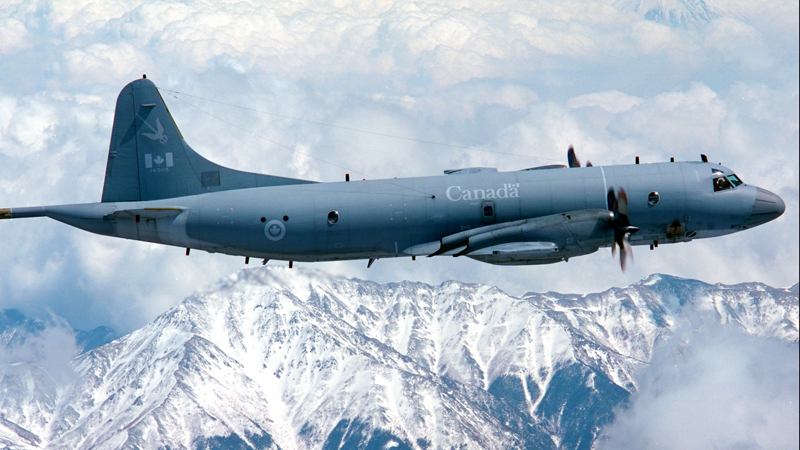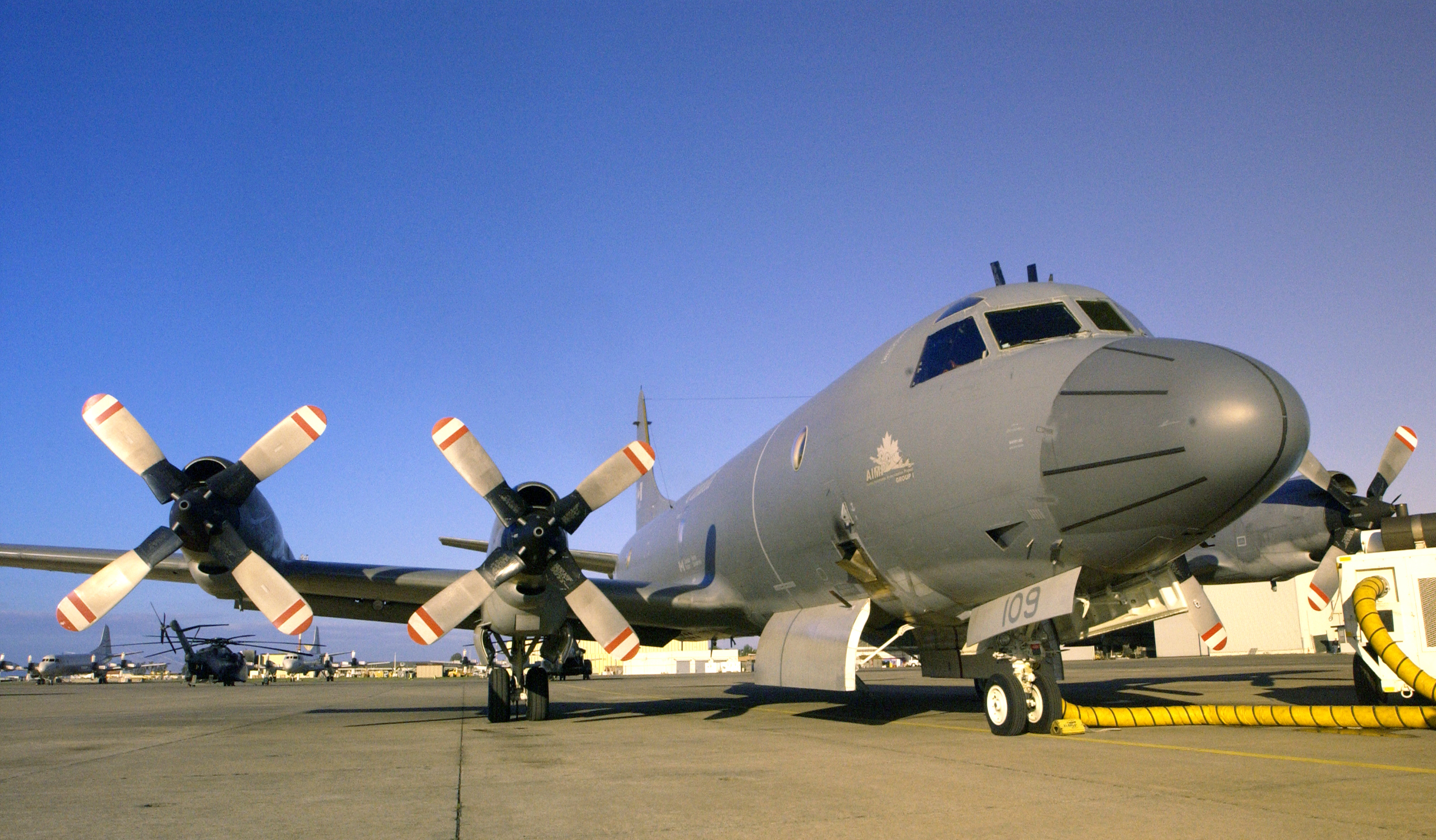CP-140 Aurora fleet modernization and life extension
Project summary
The Government of Canada is modernizing its fleet of 14 Aurora aircraft. The Aurora Incremental Modernization Project (AIMP) involves 23 individual projects to acquire, integrate and install new mission systems and sensors onto the CP-140 for intelligence, surveillance and reconnaissance. This project is being executed in a phased approach with four blocks; blocks I, II and III are complete, and block IV is in the implementation phase.
The Government of Canada has also extended the life of the Aurora fleet. The Aurora Structural Life Extension Project (ASLEP) involved replacing wings and horizontal stabilizers on the aircraft, which will extend the operational life of the CP-140 Aurora fleet to the 2030 timeframe. All aircraft have been life-extended and the project is currently in the close-out phase.
The Aurora fleet is Canada’s primary airborne intelligence, surveillance, and reconnaissance aircraft. The Aurora provides a full range of maritime, littoral and overland surveillance capabilities for domestic and deployed missions in support of Canadian sovereignty and international objectives, as well as anti-surface and anti-submarine warfare. It has been modernized with a world-class integrated mission suite with state-of-the-art avionics, communications systems, computer networks, and sensors.
Project phases

Currently in Phase 4: Implementation
1. Identification
1. Identification
Aurora incremental modernization project (AIMP)
- August 1998
Aurora structural life extension project (ASLEP)
- March 2008
2. Options analysis
2. Options analysis
Aurora incremental modernization project (AIMP)
- Carried out under a previous project
Aurora structural life extension project (ASLEP)
- Carried out under a previous project
3. Definition
3. Definition
Aurora incremental modernization project (AIMP)
- Waived for blocks I, II and III
- Block IV preliminary project approval: October 2013
Aurora structural life extension project (ASLEP)
- Waived
4. Implementation
4. Implementation
Aurora incremental modernization project (AIMP)
- Block I: Replace the high frequency radio and a number of obsolete systems in order to provide a baseline for the major upgrades that followed
- Project approval: October 1999
- Contract award: December 1999
- Initial operational capability: 1 December 2003
- Full operational capability: December 2005
- Block II: Replace the outdated navigation and communication management systems, and associated radios
- Project approval
- Navigation systems: June 1999
- Communications systems: June 2002
- Contract award:
- Navigation systems: August 2000
- Communications systems: June 2002
- Initial operational capability: February 2008
- Full operational capability: March 2012
- Project approval
- Block III: Replace the mission computer and sensors (radar, electro-optics/infrared sensor package, ESM, and acoustic detection systems)
- Project approval: May 2002
- Contract award: May 2002
- Initial operational capability: January 31, 2014
- Full operational capability: December 18, 2019
- Block IV: Upgrade three key features of the fourteen block III configured aircraft: beyond-line-of-sight satellite communication, link 16 datalink (a military tactical data exchange network used by NATO countries), and self defence system.
- Project approval:
- Definition: October 24, 2013
- Implementation: June 16, 2015
- Contract award: October 16, 2015
- Initial operational capability: winter 2024
- Full operational capability: summer 2024
- Project approval:
Aurora structural life extension project (ASLEP)
- Project approval: May 2008
- Initial operational capability: April 11, 2012
- Full operational capability: April 24, 2020
5. Close-out
5. Close-out
Aurora incremental modernization project (AIMP)
- December 2024
Aurora structural life extension project (ASLEP)
- December 2021
Learn more about the Defence procurement process.
Additional information
Project Updates
Project Updates
December 3, 2021
Proof of compliance phase 2 and operational test and evaluation phase 1 completed.
July 25, 2021
Combined proof of compliance phase 2 (Mission Systems) and operational flight testing has started.
April 11, 2021
First phase of proof of compliance flight testing (Flight Sciences) completed on CP140111.
March 30, 2021
CP140118 (Production aircraft #1) delivered to 14 Wing Greenwood.
December, 2020
CP140111 14 Wing Greenwood has started.
October 6, 2020
Started modification of production to the third aircraft.
July 21, 2020
The 2nd block IV prototype aircraft, CP140111, completed its first test flight from the IMP facility located at Halifax International Airport.
April 24, 2020
CP140114, the fourteenth and last aircraft to receive the structural modifications under ASLEP was delivered.
February 21, 2020
CP140108, completed its initial assessment flight, landing at 14 Wing Greenwood.
October 4, 2019
Second incremental ground test readiness review is complete.
June 26, 2019
Aircraft CP140110 was delivered. This is the 14th (and last) block III aircraft, of which 13 have been life-extended.
April 29, 2019
The block IV prototype aircraft ground test readiness review was conducted.
October 16, 2015
General Dynamics won a contract amendment to implement the block IV modifications to the data management system.
June 2015
Block IV of the AIMP received project approval.
October 2014
Two CP-140 Aurora were deployed on Operation IMPACT, the Canadian Armed Forces’ contribution to the fight against ISIL in the Middle East.
January 31, 2014
Initial operational capability for block III was achieved. Block III involves the upgrade of the mission systems and sensors.
March 2012
Block II of the AIMP was completed, involving replacement of outdated navigation and communication management systems, and associated radios.
March 2011
Two CP-140 Aurora were deployed on Operation MOBILE, the Canadian Armed Forces’ participation in the international response to the popular uprising in Libya against the regime of Moammar Gadhafi.
February 2010
One CP-140 Aurora supported the RCMP-led integrated security unit for the 2010 Vancouver Olympic Games under Operation PODIUM.
December 2005
Block I of the AIMP was completed, involving replacement of the high frequency radio and several obsolete systems to provide a baseline for other major upgrades that will follow.
Industry
Benefiting Canadian Industry
Extensive industry engagement was carried out to advertise the requirements and to ensure potential solutions were available prior to the release of the AIMP request for proposal, whenever competition was a possibility.
The Industrial and Regional Benefits (IRB) Policy was applied to the AIMP Block III, imaging radar system (IRS), ASLEP, system support avionics and airframe maintenance projects. The Industrial and Technological Benefits (ITB) policy was applied to block IV.
As of June 2020, total IRB/ITB obligations are as follows:
- AIMP block III: the full $359 million have been completed
- Imaging radar system: the full $344 million have been completed
- System support avionics: $335 million of $350 million have been completed, with $15 million in progress
- Airframe maintenance: the full $618 million have been completed
- Block IV: the full $285 million have been completed
Industrial and regional benefits
List of procurements and their IRB managers
Contractors
The links below lead to externals websites that may be available in English only.
- CAE
- Simulator systems and magnetic anomaly detector
- CMC Electronics
- Prime contractor for block II navigation systems
- General Dynamics Mission Systems Canada
- Data management system, acoustic processing system and development of block IV
- IMP Group International Inc.
- Modernisation and life extension
- L-3 Communications Electronic Systems
- Avionics
- Lockheed Martin Canada
- Supply and installation of the Wescam Model 20 EO/IR
- Lockheed Martin
- Including Lockheed Martin Aeronautics for the structural life extension kits and Lockheed Martin Systems Integration – Owego for the ESM system
- MDA Corporation
- APS-508 multi-mode Imaging Radar System
- Thales Canada
- Prime contractor for Block II Communication systems
Technical information
Technical information
Aurora specifications
- Length: 35.61 metres
- Wingspan: 30.37 metres
- Height: 10.30 metres
- Power: 4 Allison T-56-A-14-LFE turboprop engines
- Maximum Speed: 750 kilometres per hour
- Cruising Speed: 556 kilometres per hour
- Range: 7,400 kilometres
- Equipment:
- Navigation systems including:
- Control display unit, used to display all information critical to flight, including speed, altitude, heading
- AN/ARN-508 VOR/ILS/marker beacon, used for enroute navigation and landing
- Embedded global positioning system/Inertial navigation system (EGI), used to provide aircraft position, heading and velocity
- Communications systems including:
- AN/ARC-511 and AN/ARC-513 very high frequency (VHF) radios, used for line of sight air traffic management and marine communications
- AN/ARC-210 and AN/ARC-234 very and ultra high frequency (V/UHF) radios, used for line of sight data communications and two-way radio communication
- ARC-512 high frequency (HF) radios and Link-11 tactical data Link, used to transmit, relay and receive long range tactical data and communication
- Data management system that integrates information and displays it from the following sensors:
- AN/APS-508 multi-mode Imaging radar system, an exceptionally capable detection, tracking and imaging radar system for weather avoidance, maritime and ground-mapping roles
- MX-20 electro-optics/infrared sensor package that allows day and night visual surveillance at extended ranges
- AN/UYS-504 modular VME acoustic sensor processor for analysis of information received from sonobuoys
- AN/ASQ-508 magnetic anomaly detector, used primarily for the detection of submarines
- AN/ALQ-507 electronic support measures (ESM) system, used to identify and locate sources of radio frequency emission
- Armament and search stores:
- Mark 46 mod 5 torpedoes
- Sonobuoys
- Signal charges
- Smoke markers
- Illumination flares
- Crew: Standard crew complement of 10 members varying according to mission including:
- 2 pilots
- 1 flight engineer
- 2 air combat sensor officers
- 5 airborne electronic sensor operators
- Navigation systems including:
Project cost
Project cost
The total approved cost in 2019 for AIMP and ASLEP combined is $1.983 billion.
Issues/Risks
Issues/Risks
N/A


